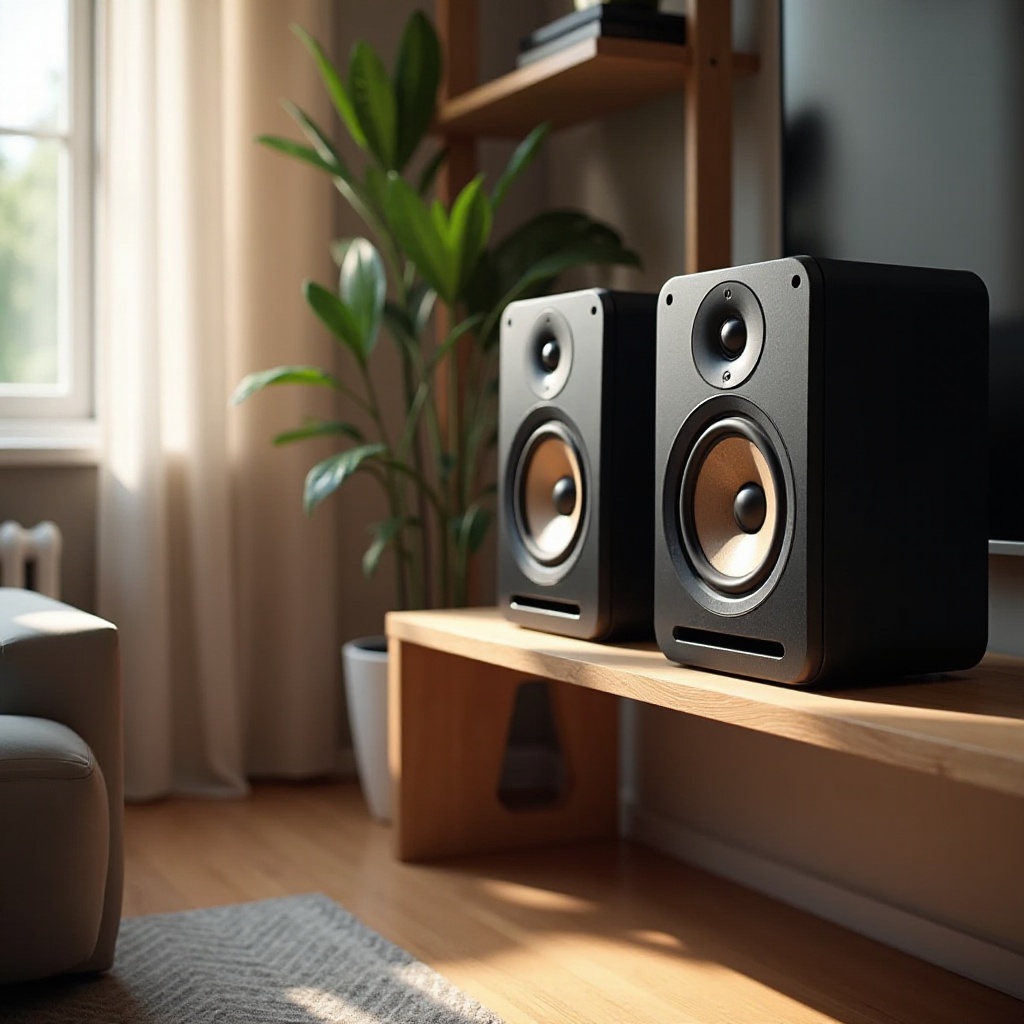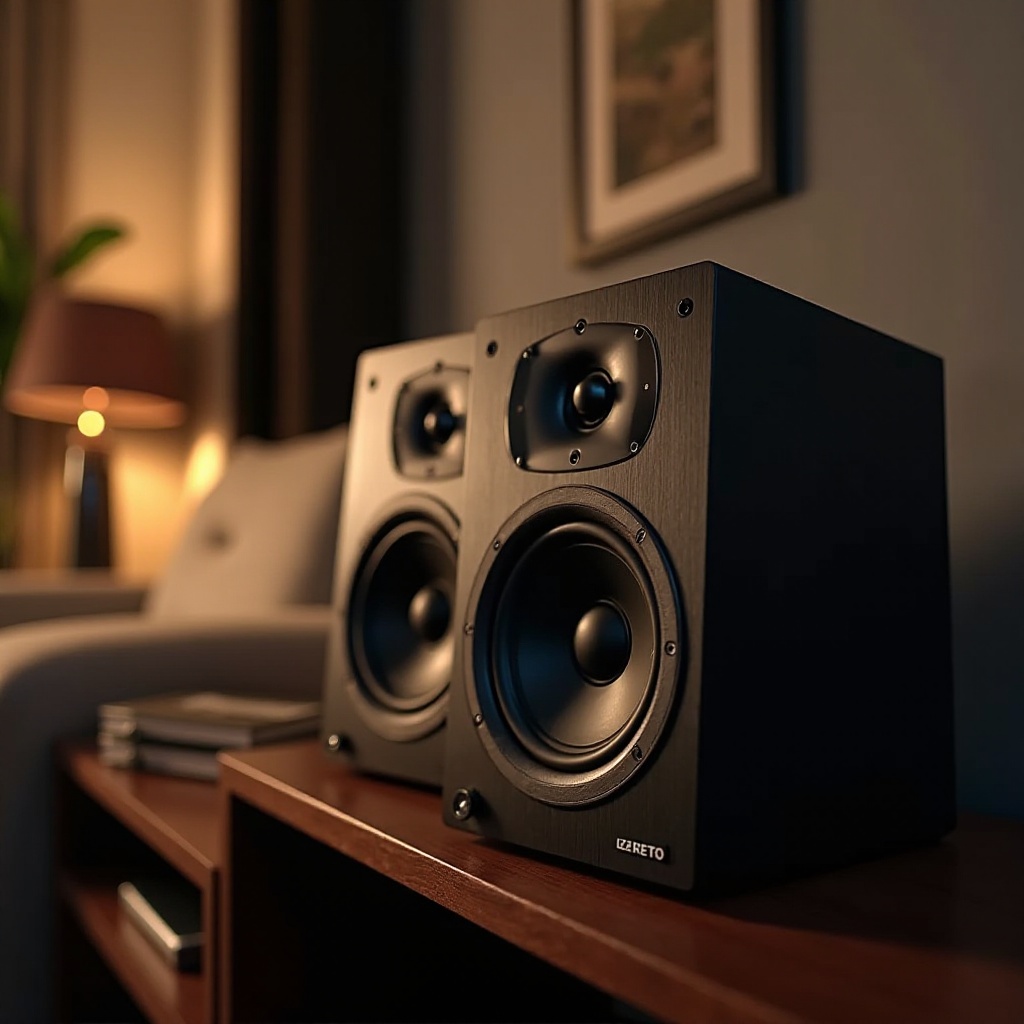Best Bookshelf Speakers with Good Bass
Introduction
Bookshelf speakers can offer incredible sound quality that fills a room despite their compact size. For audiophiles and casual listeners alike, the promise of rich bass from these small yet powerful devices is a dream come true. But with so many options on the market, finding the right bookshelf speakers with excellent bass can be quite a challenge. In this article, we’ll dive into the best bookshelf speakers for good bass in 2024, review key features to look for, and offer setup tips to maximize your listening experience.

What to Look for in a Bookshelf Speaker with Good Bass
When searching for bookshelf speakers that deliver good bass, there are several important criteria to keep in mind:
-
Frequency Response: This refers to the range of bass, midrange, and treble the speaker can produce. For robust bass, look for a lower-end frequency that extends down to around 50 Hz or lower.
-
Woofer Size and Material: Larger woofers (typically 5.25 inches or bigger) can move more air, which helps reproduce deep bass sounds. The material of the woofer also impacts sound quality, with materials like Kevlar and polypropylene offering balanced sounds.
-
Power Handling (RMS): The RMS rating indicates the continuous power the speaker can handle. Higher RMS means the speaker can manage more power over longer periods, ideal for bass-heavy music.
-
Cabinet Design: A well-designed cabinet can reduce unwanted resonance and vibrations, improving the clarity and depth of the bass.
-
Amplification: Bookshelf speakers come in powered (active) and passive forms. Powered speakers with built-in amplifiers may offer better bass control, while passive speakers rely on external amplifiers.
-
Brand Reputation and Reviews: Established brands with positive reviews often offer more reliable and high-quality products. Peer reviews can also provide real-world insights into performance.
Top Picks for Bookshelf Speakers with Good Bass in 2024
With these criteria in mind, let’s explore some of the top bookshelf speakers that deliver excellent bass performance this year.
Speaker 1: JBL Studio 530
JBL is synonymous with quality sound, and the Studio 530 is no exception. With a 5.25-inch PolyPlas woofer and a neodymium tweeter, these speakers deliver a balanced sound with an impressive low end. The bass reflex port design further enhances the low-frequency response, making it one of the top choices for music enthusiasts who crave powerful bass.
Speaker 2: KEF Q350
The KEF Q350 features a 6.5-inch Uni-Q driver array that provides detailed sound and excellent bass. Its coaxial design aligns the tweeter and woofer in the same acoustic center, ensuring the precision of audio output. The Q350’s low-frequency performance, coupled with its sleek design, makes it an exceptional option for any audiophile.
Speaker 3: Klipsch RP-600M
Klipsch is well-regarded for powerful sound, and their Reference Premiere RP-600M speakers live up to this reputation. These speakers come equipped with a 6.5-inch spun-copper Cerametallic woofer and a vented tweeter design that deliver deep, controlled bass. The Tractrix Horn technology also ensures clear and articulate high-frequency sounds.
Speaker 4: Elac Debut 2.0 B6.2
Elac’s Debut 2.0 B6.2 bookshelf speakers are a testament to the brand’s commitment to high-quality audio performance. The 6.5-inch Aramid fiber woofer provides robust bass, while the engineered MDF cabinet minimizes vibrations. These speakers offer a great balance between performance, design, and affordability.
Speaker 5: Audioengine HD6
The Audioengine HD6 speakers feature built-in amplifiers, which make them a convenient, high-performance option for bass lovers. The 5.5-inch Kevlar woofers provide strong and well-rounded bass, while the hand-built cabinets reduce unwanted resonance. Additionally, these speakers come with aptX HD Bluetooth, making them versatile for any audio setup.

Tips for Optimizing Bass Performance
To get the best bass performance from your bookshelf speakers, follow these tips:
-
Positioning: Place your speakers around 8-10 inches from the back wall. This allows the bass to resonate better with the room.
-
Room Acoustics: Add rugs, curtains, and soft furnishings to reduce echoes and improve overall sound quality.
-
Isolation Pads: Use isolation pads to minimize vibrations from your speakers to surfaces, which can muddy the bass response.
-
Use Equalizer Settings: Adjust the EQ settings on your receiver or amplifier to boost the lower frequencies without overpowering the mids and highs.
-
Phase Adjustment: If your speakers have phase adjustment controls, experiment with these settings to achieve the best bass response in your listening area.
Setting Up Your Bookshelf Speakers for Optimal Bass
Setting up your bookshelf speakers properly is crucial for optimal bass performance. Start by placing them on sturdy stands or shelves, ensuring they are at ear level when seated. If possible, angle them slightly inward towards the listening position for a better soundstage. Avoid placing them too close to corners, as this can create boomy bass.
Make sure to calibrate your receiver or amplifier settings for balance. Use test tones and a sound meter to adjust levels for a better listening experience. Experiment with placement and settings until you achieve a balanced bass that complements your room.

Conclusion
Bookshelf speakers with good bass can transform your listening experience, offering rich, deep sounds that elevate music, movies, and more. By understanding key features, exploring top models like those from JBL, KEF, Klipsch, Elac, and Audioengine, and optimizing your setup, you can enjoy high-quality bass in a compact form. Happy listening!
Frequently Asked Questions
How can I improve the bass on my bookshelf speakers?
To improve bass, position your speakers correctly, use isolation pads, and adjust the EQ settings on your receiver or amplifier. Enhancing room acoustics with soft furnishings can also help.
Do bookshelf speakers need a subwoofer for good bass?
While bookshelf speakers can deliver good bass, adding a subwoofer can enhance low frequencies, providing a fuller sound, especially for larger rooms or bass-heavy genres.
What is the best placement for bookshelf speakers to achieve optimal bass?
Place bookshelf speakers around 8-10 inches from the back wall and avoid corners. Ensure they are at ear level when seated and slightly angled toward the listening position for the best sound balance.
